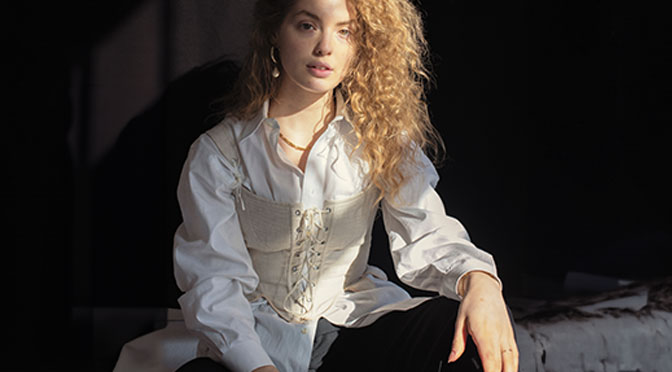Corsets have always been a part of fashion history, but their popularity reached a new peak during the Victorian era. Many people associate corsets with tight lacing, breathlessness and swooning, but there is much more to the garment than meets the eye. In this blog post, we will explore the history, function, purpose, and importance of the corset in SM culture.
The origins of the corset can be traced back to the 16th century, when women wore a restrictive garment around their waist to achieve the desired hourglass figure. These early corsets were called “stays” and were made of sturdy, rigid materials such as metal or whalebone. They were designed to elongate the torso to accentuate the waist.
As clothing styles evolved, corsets changed as well. In the 18th and 19th centuries, corsets became more intricate, featuring boning, lace, and intricate embroidery. Tight lacing also became popular at this time, and women cinched their waists to unimaginable proportions. This practice led to various physical ailments, such as indigestion, breathing problems, and even death, which eventually caused the corset to lose popularity.
However, in the 20th century, the corset made a comeback thanks to the fetish and S&M scene. When constructing a corset, designers use specific materials to achieve the desired structure of the garment. The inner material of a corset is usually made of a soft, flexible fabric like cotton or silk, while the outer layer is often made of a sturdier material like leather or vinyl. Corsets also feature stays that support the shape of the garment. The stays can be made of different materials such as metal, whalebone, or synthetic materials such as plastic or acrylic.
The effect of a corset on the chest depends on its design and the type of corset. Corsets can be used to flatten the breast and highlight it, depending on how they are designed. An underbust corset extends below the bust and usually does not highlight the breast. Instead, it focuses on narrowing the waist and accentuating the hips. An underbust corset can essentially flatten the breast or maintain its natural shape. A full-bust corset extends the entire length of the torso and can be used to highlight and accentuate the breast. It is often designed to lift the bust and place a greater emphasis on the cleavage. This type of corset can help create a dramatic hourglass figure, narrowing the waist and highlighting the chest.
Corsets serve different functions in different contexts. In fashion, corsets accentuate the female figure and give the wearer an hourglass shape. In S&M culture, the corset serves as a symbol of power, control and eroticism.
Aesthetics: corsets can be considered as aesthetically pleasing garments that dramatically alter the body shape and create a specific visual effect. In BDSM scenarios, visual representation can play an important role.
Role-playing: In BDSM, role-playing is common, and the wearing of corsets can be part of a particular scenario or role the participants are playing. Corsets can help reinforce feelings of dominance or submission.
Bondage: Corsets can be used with bondage practices to restrict movement and increase control. This can be part of a BDSM game that emphasizes power and dominance.
Fetishism: Some people in the BDSM community have specific fetishes for certain clothing or materials, including corsets. Wearing a corset can be part of a fetish or sexual preference.
The history of the corset is colorful and full of social implications ranging from oppression to eroticism. Despite its changing function, the corset has always possessed a certain charisma, making it a fascinating garment to explore. Whether you are a fashionista or belong to the S&M community, the corset is a garment that will always fascinate you.

